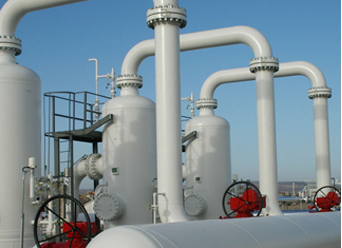Telugu
- Afrikaans
- Albanian
- Amharic
- Arabic
- Armenian
- Azerbaijani
- Basque
- Belarusian
- Bengali
- Bosnian
- Bulgarian
- Catalan
- Cebuano
- Corsican
- Croatian
- Czech
- Danish
- Dutch
- English
- Esperanto
- Estonian
- Finnish
- French
- Frisian
- Galician
- Georgian
- German
- Greek
- Gujarati
- Haitian Creole
- hausa
- hawaiian
- Hebrew
- Hindi
- Miao
- Hungarian
- Icelandic
- igbo
- Indonesian
- irish
- Italian
- Japanese
- Javanese
- Kannada
- kazakh
- Khmer
- Rwandese
- Korean
- Kurdish
- Kyrgyz
- Lao
- Latin
- Latvian
- Lithuanian
- Luxembourgish
- Macedonian
- Malgashi
- Malay
- Malayalam
- Maltese
- Maori
- Marathi
- Mongolian
- Myanmar
- Nepali
- Norwegian
- Norwegian
- Occitan
- Pashto
- Persian
- Polish
- Portuguese
- Punjabi
- Romanian
- Russian
- Samoan
- Scottish Gaelic
- Serbian
- Sesotho
- Shona
- Sindhi
- Sinhala
- Slovak
- Slovenian
- Somali
- Spanish
- Sundanese
- Swahili
- Swedish
- Tagalog
- Tajik
- Tamil
- Tatar
- Telugu
- Thai
- Turkish
- Turkmen
- Ukrainian
- Urdu
- Uighur
- Uzbek
- Vietnamese
- Welsh
- Bantu
- Yiddish
- Yoruba
- Zulu
Telephone: +86 13120555503
Email: frank@cypump.com
డిసెం . 24, 2024 04:02 Back to list
sewage pump tank
Understanding Sewage Pump Tanks
Sewage pump tanks play a crucial role in managing wastewater and maintaining the functionality of plumbing systems in residential and commercial properties. These tanks are specifically designed to collect and transport sewage and wastewater away from homes and buildings, ensuring that waste is effectively moved to municipal treatment facilities or septic systems. Understanding the purpose and operation of sewage pump tanks can help property owners make informed decisions regarding their plumbing systems.
What is a Sewage Pump Tank?
A sewage pump tank, often referred to as a holding tank or a lift station, is an essential component of a sewage system. It typically consists of a large, watertight container buried underground. This tank collects wastewater from bathrooms, kitchens, and laundry facilities that are situated below the level of the main sewer line. In situations where gravity alone cannot facilitate the movement of sewage, a sewage pump tank is necessary to lift the waste to the proper elevation for proper drainage.
How Does a Sewage Pump Tank Work?
The operation of a sewage pump tank is fairly straightforward. Wastewater flows into the tank through inlet pipes. When the tank reaches a certain capacity, a float switch activates the electric pump within the tank. The pump then forces the wastewater through an outlet pipe and into the main sewer line or septic system, depending on the setup. This process ensures that waste does not accumulate and cause backups, maintaining a hygienic and functional plumbing system.
Importance of Sewage Pump Tanks
Sewage pump tanks are vital for several reasons
sewage pump tank

1. Preventing Backups One of the primary functions of a sewage pump tank is to prevent sewage backups that can lead to unsanitary conditions, foul odors, and potential health hazards. By actively pumping waste out of the tank, these systems help to maintain a clean and safe environment.
2. Protecting Property A backup of sewage can cause extensive damage to property, including the deterioration of walls, flooring, and personal belongings. By using a sewage pump tank, homeowners can safeguard their investments and reduce the risk of costly repairs.
3. Facilitating Waste Management In areas where traditional sewer systems are not available, sewage pump tanks are essential for effective waste management. They provide a reliable method for disposing of wastewater, especially in rural or remote areas.
4. Environmental Protection Properly maintained sewage pump tanks help prevent contamination of local water sources. By ensuring that waste is efficiently transported to treatment facilities, these systems reduce the risk of environmental pollution and protect public health.
Maintenance and Care
Like any other mechanical system, sewage pump tanks require regular maintenance to operate efficiently. Homeowners should routinely inspect their tanks for signs of wear and tear, including checking the float switch and the pump itself. Regular pumping is also necessary to remove accumulated sludge and prevent clogs. Many property owners choose to hire professional services for maintenance to ensure the longevity and reliability of their sewage systems.
Conclusion
In conclusion, sewage pump tanks are indispensable systems for managing wastewater in areas where gravity drainage is not feasible. By understanding their function and importance, homeowners can better appreciate the role these tanks play in maintaining sanitary and functional plumbing systems. Regular maintenance and proper care will ensure these systems operate efficiently, protecting both property and the environment from the harmful impacts of sewage overflow. With proper attention, sewage pump tanks will serve as reliable guardians of hygiene and health in our living spaces.
-
Heavy-Duty Mining Sludge Pumps - Wear-Resistant Slurry Handling
NewsAug.02,2025
-
Horizontal Split Case Pump with GPT-4 Turbo | High Efficiency
NewsAug.01,2025
-
ISG Series Pipeline Pump - Chi Yuan Pumps | High Efficiency, Durable Design
NewsAug.01,2025
-
Advanced Flue Gas Desulfurization Pump with GPT-4 Turbo | Durable & Efficient
NewsJul.31,2025
-
ISG Series Vertical Pipeline Pump - Chi Yuan Pumps | Advanced Hydraulic Design&Durable Construction
NewsJul.31,2025
-
ISG Series Vertical Pipeline Pump - Chi Yuan Pumps | Energy Efficient & Low Noise
NewsJul.31,2025










